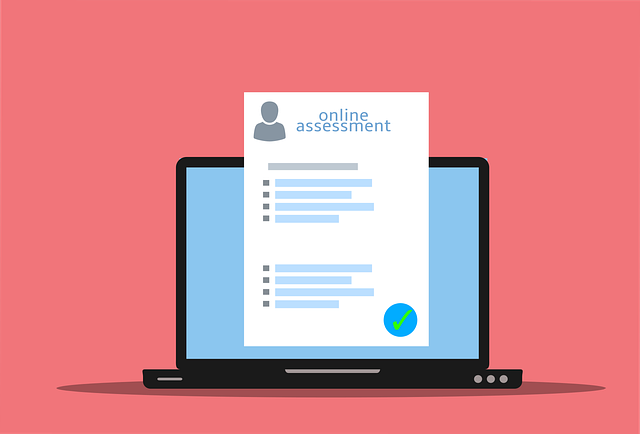Whether you’re the lender or the borrower for a consumer loan, the priority for each is that the repayments are manageable, and the loan balance will be re-paid in full.
Depending on the type of loan, the suggestion is that borrowers can incorporate a test as part of being proactive to determine their borrowing capacity. Consumers must become aware of the factors that impact their ability to borrow and how loan providers arrive at a client’s loan amount.
Once you have an idea of how much you can spend, whether for a first home or a milestone occasion like a wedding, it will be much easier to budget that expense to comfortably fit with standard monthly expenditures. It’s essential for you as the client to ensure your comfortability.
Sometimes a lending agency can decide that you qualify for more than you anticipate or request. That doesn’t mean that you need to borrow that amount, nor that you should. Consider this a gauge while you stick with what’s affordable and manageable for your lifestyle and financial circumstances.

Image via Pixabay
What Factors Do Lenders Use To Determine Loan Amounts
When taking a consumer loan for any purpose, a priority is to establish a loan amount. It’s suggested borrowers can engage in loan tests that will reveal their borrowing capacity. Go to https://www.consumerfinance.gov/consumer-tools/financial-well-being/ to learn about your own financial well-being.
In that same vein, lenders will determine an adequate loan amount based on different variables.
These figures could differ with occasions when the loan provider might approve you for a more significant amount than what you need or request. That isn’t an indication that you have to accept that offer. Financial counselors and experts advise consumers only to borrow what they need and can comfortably afford to repay.
In remaining proactive with your loan process, aside from testing, it’s wise to learn your borrowing capacity and educate on the factors each lender you consult uses to determine their loan amounts. All lenders differ in their qualifying process, but most will use relatively common standards for assigning a borrowing limit.
- A credit score is a primary factor when assessing a borrower’s credibility
Critical criteria go into assessing a credit score, including repayment history, credit utilization, and debt-to-income ratio. This is one of the prime factors in determining how much a borrower can afford to repay.
The debt-to-income ratio can often outrank the credit score regarding its importance to a lender. You might have a good score, but the money paid out for debt might be substantial compared to the income you bring into the household.
The presumption is that adding another loan to that already heavy loan would be incredibly risky, with a high chance of an inability to repay one or more debts, possibly the new loan, resulting in default.
Regardless of a steady history of consistent repayments and a good score, this would likely result in a loan rejection. This ratio should be below 30 percent, with a preference for most lenders to be in the single digits.
That, along with a good credit score and minimal credit utilization, would result in approval and a higher loan amount. Click this link for details on the “five C’s” of credit.
- The credit profile should be void of negative marks
A credit history is assessed before a person is approved for a loan; these are connected to the credit score. The loan provider is researching for proof of financial responsibility. Any defaults, judgments, or negative marks will alert the loan provider that this borrower presents a high risk.
Some red flags lenders look for aside from inconsistent repayments include attempts at borrowing, resulting in numerous hard pulls on the history. Each time there’s a formal loan or line of credit application, this appears as an inquiry on your credit profile.
When there are multiples of these within a short span, lenders deem a client as a high risk.
- Employment and income for a lender are closely tied
A steady employment history speaks to a lender of a borrower’s dependability and stability. If there are gaps, unless there are extenuating circumstances, otherwise unexplained, or considerable job changes over a brief period, the lender will feel more secure in providing a lesser loan amount.
Usually, the time frame assessed for employment history is roughly three years. Suppose a loan provider assesses an applicant having the same employer for the entire span with incremental raises. In that case, this individual will receive the higher borrowing limit because they deem it a lower risk.
One thing to note, a current promotion or increase is not something the lender will consider. What the provider wants to see is consistency. Perhaps you earned $25,000 annually for a period of ten years and were recently promoted to a high-ranking position where you’ll receive $75,000 each year.
The lending agency will be impressed by the ten-year consistent history of the $25,000 and base their loan amount on that rather than the new details.
- The down payment plays in your favor
Regardless of the consumer loan type, whether for an auto or a house, the loan provider will look favorably toward the borrower with a sizable down payment. As is typical for a home loan, the standard is for an applicant to save a 20 percent down payment.
When you can do this or even perhaps a higher amount, you gain a greater chance for loan approval with the potential for a substantially lower interest rate. It would be best if you strived for this because it will maximize your funds and potentially reduce monthly installments.
That’s true of most loan products. Borrowers are encouraged to put as much down on the loan as possible, making them less of a loan risk, improving the possibility for approval, and keeping the interest rate at its lowest.
It’s a heavy investment upfront and tough for many individuals to accomplish, but it’s worth the effort to save in whatever way you’re able, whether taking a side gig or perhaps you can have it gifted to you.
- Secure the loan
Some borrowers are at high risk, whether showing a poor employment history, less than favorable credit, or below-average income, preventing them from being eligible for unsecured standard products. That doesn’t mean there aren’t options. Some loan providers allow borrowers to secure their loans to get approval.
With collateral, a client can secure their loan funds with a valuable asset relatively equal to the loan amount diminishing the lender’s risk. The lending agency can seize the property if repayments stop in order to recover their loss. This makes the loan provider more willing to grant approval and provide a healthy loan amount.
One thing to be cautious of if you’re in the position of having low income and a poor credit and employment history is that you can afford the borrowing limit you’re given comfortably without the likelihood of defaulting and losing your asset. This could be a home, an auto, or even your savings.
Final Thought
Whether borrowing or lending, the objective, in either case, is to determine a loan amount that will be repaid without a struggle for the individual or causing a risk for the lender.
As a borrower, consumer loan tests are available to determine your borrowing capacity. Still, aside from the testing, you should become familiar with how the loan providers come to their loan amount determinations.
The more you participate in your loan process, the better chance you have of not only being approved but of getting the amount you need for the type of loan you request.
These products can include home mortgages, consolidation loans, auto products, or any lending option; different consumer loans will have their own criteria and expectations.
A note of caution when you do appear favorable with every factor assessed and receive a positive response from your loan provider, pay attention to the loan amount you’re approved for and recognize that you’re not committed to taking it to the limit.
Some lenders will offer you a more significant amount than what you request or need.
It’s within your control to decline the excess, stick within your borrowing capacity where you’re comfortable, and can manage the expense with your other monthly obligations. That will lead to a re-paid balance, no potential for struggling, and no default.





